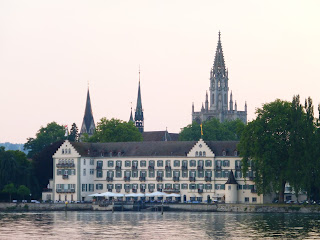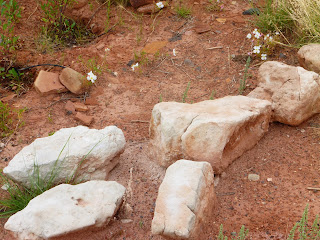“A
person is only forgotten when his or her name is forgotten.”
-the
Talmud
Our friend, Dave, heard
that we were going to Germany and asked if we were familiar with
stolpersteines (stumbling blocks). We had never heard of them, but
his description was fascinating. The project was started by artist
Gunter Demnig in 1994. It commemorates victims of Nazi persecution
with brass-plated plaques. They are placed in front of each
individuals last chosen place of residence or employment.
We planned to spend the last
three days of our spring European trip in Constance, Germany. This
sounded like a good opportunity to search for them.
 |
| HOME IN CONSTANCE WITH STUMBLING BLOCKS IN FRONT |
 |
| Hier lived, Helmut Spiegel, Born 1909 Deported 1940 Gurs (internment camp in southern France) Murdered in Auschwitz |
Each epitaph begins with the
words: HIER WOHNTE (here lived), followed by details of the
individual: their name, year of birth and fate, which often involved
the dates of deportation and death. To read the inscription and see
the last place someone lived a normal life before persecution makes
this sad time in history more memorable. Some indicated that a child
escaped safely to another country and the parents and other siblings
were later deported.
 |
| FAMILY OF FOUR PERSECUTED |
Since 1996, over 48,000
stolpersteines have been laid in 18 countries in Europe, making the
project the world's largest memorial. The majority commemorate Jewish
victims of the Holocaust—however, others have been placed for
gypsies, homosexuals, Jehovah's Witnesses, black people, and
Christians opposed to the Nazis.
The
project is not without criticism. Munich has rejected stolpersteines,
following objections raised by Munich's Jewish Community's president
Charlotte Knobloch. Her argument is that no respectful memorial can
be placed on the ground where it can be walked on or easily
vandalized. In other cities, permission was preceded by long,
sometimes emotional discussions. I found it interesting that when I
had asked at the Constance tourist office for help in finding the
stones, they didn't have any information on them.
The cost of
the stolpersteines is covered by donations, collections, individual
citizens, contemporary witnesses, school classes, or communities. The
blocks are still made by hand in Demnig's Cologne studio which
produces 450 per month. He still installs many of them himself. For
€120
anyone can sponsor a stone, however, there is at least a six-month
waiting list.
 |
| Escaped 1938 Argentina, Survived |
 |
| Constance, Germany |
 |
| Constance, Germany |
 |
| CONSTANCE, GERMANY |
 |
| VIEW OF LAKE CONSTANCE |











